Grocery Shopping for BLW: Stocking Up Smart & What to Skip
- 1 new fruit
- 1 new vegetable
- 1 new starch
- 1 new protein food
- 1 new challenge category food
- I mentioned quite a few other episodes I've done related to grocery shopping in this episode, I'll link them all here:
- There are also allergen-specific episodes available on THE BABY-LED WEANING MADE EASY podcast, 1 per each allergenic food:
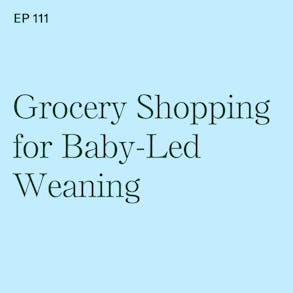
LISTEN TO THIS EPISODE
Episode Description
What foods do you need to start baby-led weaning? Is there a grocery store list for babies out there? And what about all the baby foods at the store: can I skip them? In this episode we’re talking about getting ready for the grocery store: how do you stock up smartly when you’re starting baby-led weaning and what can you skip?
I’m taking you aisle-by-aisle through the grocery store, sharing ideas on how to tackle the first week of starting solids and what foods to buy. You do NOT need to spend a lot of money to give your baby a safe start to solid foods. This episode is jam-packed with tips and tricks for mastering grocery shopping when you’re switching to solid foods.
Links from this Episode
- The peanut butter puffs I mentioned in this episode that I like for BLW and introduction of peanut protein to babies are called Puffworks Baby - you can get 20% off with the code 20BABYLED and shop here.
- Baby-Led Weaning with Katie Ferraro program with the 100 First Foods™ Daily Meal Plan, join here: https://babyledweaning.co/program
- Baby-Led Weaning for Beginners free online workshop with 100 First Foods™ list to all attendees, register here: https://babyledweaning.co/baby-led-weaning-for-beginners
Other Episodes Related to this Topic
- Episode 11 - How to Introduce Allergenic Foods to Your Baby
- Episode 13 - Milk Protein: How to Introduce Your Baby to this Potentially Allergenic Food
- Episode 14 - Peanut: How to Introduce Your Baby to this Potentially Allergenic Food
- Episode 15 - Egg: How to Introduce Your Baby to this Potentially Allergenic Food
- Episode 29 - Wheat: How to Introduce Your Baby to this Potentially Allergenic Food
- Episode 31 - Fish: How to Introduce Your Baby to this Potentially Allergenic Food
- Episode 37 - Soy: How to Introduce Your Baby to this Potentially Allergenic Food
- Episode 39 - Tree Nuts: How to Introduce Your Baby to this Potentially Allergenic Food
- Episode 41 - Shellfish: How to Introduce Your Baby to this Potentially Allergenic Food
- Episode 43 - Sesame: How to Introduce Your Baby to this Potentially Allergenic Food
- Episode 24 - Water: When to Offer Your Baby Water and How Much
- Episode 47 - Oatmeal: How Your Baby Can Safely Self-Feed Oatmeal
- Episode 75 - Canned Foods that CAN Work for Baby-Led Weaning
- Episode 89 - Freezer Aisle Finds for Baby-Led Weaning
- Episode 91 - Pantry Planning for Baby-Led Weaning
- Episode 107 - Corn: How to Offer Corn Safely to Your Baby

Latest Episodes
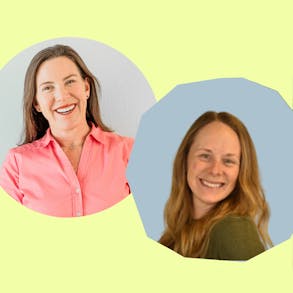
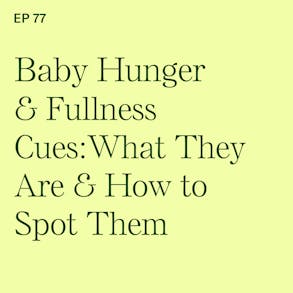
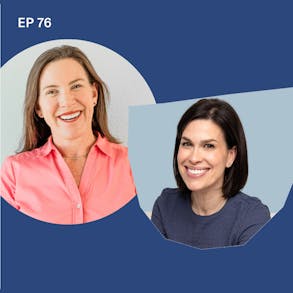
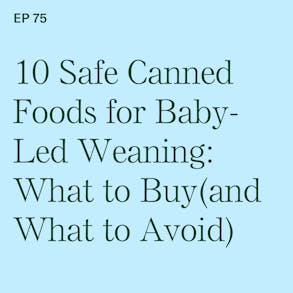

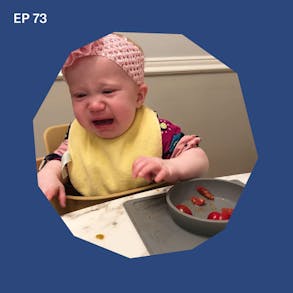
Katie Ferraro (0s):
And I'm a firm believer that the good majority of the foods at the grocery store can be made safe for baby led weaning. A lot of them are located on the perimeter as they say, but there's also some fabulous food fines for baby led weaning in those middle aisles. You just need to know what to steer clear of. Hey, there I'm Katie Ferraro, registered dietitian, college nutrition professor and mama of seven specializing in baby-led weaning. Here on the Baby-Led Weaning Made Easy podcast, I help you strip out all of the noise and nonsense about feeding, leaving you with the competence and knowledge you need to give your baby a safe start to solid foods using baby led weaning.
Katie Ferraro (42s):
Hey guys, welcome back. We are talking about grocery shopping today. Now I know some of you who are just getting started with baby led weaning are big time planner. So you're probably a list-maker, there's a lot of information in this episode. So I just want to let you know that every resource that I mentioned, I'm also going to link to in the show notes for this episode, which is at blwpodcasts.com/111. Now, why are we talking about grocery shopping? Well, because when you get to the store, it can be overwhelming. And you're like, what foods can my baby eat? Now I'm a firm believer that a babies can eat almost all foods. However, there are certainly some foods we shouldn't eat.
Katie Ferraro (1m 22s):
So I'm going to cover what you should buy at the store or can buy, but also what you should steer clear of. And I also just want to start this episode out by saying, I'm a firm believer that you don't need to go buying a whole bunch of special stuff or expensive stuff to give your baby a safe start to solid foods. But I do get questions all the time from parents that are like, yeah, yeah, I get it. But I'm going to go to the store. So could you just please tell me what to buy? So that's the point of this episode? It's all about grocery shopping for baby led, weaning stocking up smart and what to skip now, for those of you guys have been listening for a while, you might know, I do two podcast episodes a week. Monday is always like a mini baby-led weaning training episode. It's me solo. And then Thursday's episode is always an interview with a guest or feeding expert.
Katie Ferraro (2m 5s):
So in these baby led weaning training episodes like this one, I'd like to start out with a BLW tip of the day. And so my tip for the grocery store folks is make a plan for the first five days of what you're going to feed your baby. Now, if you're following my five step feeding framework for baby led weaning, we introduced five new foods a week to your baby. It can be super overwhelming to try to play like the whole month, especially when this is new to you. And I don't want you to get overwhelmed and give up and go back to spoonfeeding purees. So just do the first five days on your first grocery trip. The five foods that we feed each week, a new fruit, I do it on Monday, a new vegetable on Tuesday, a new starchy food on Wednesday, a new protein food on Thursday, and then a new challenge category food on Friday in the challenge category contains the big eight allergenic foods, plus sesame,baby-led plus some of the trickier textures and more complex flavor profile foods that babies certainly can eat, but don't always get the chance to try.
Katie Ferraro (2m 57s):
So if this is new to you or you want learn more about the five-step feeding framework, I teach about it on my free online workshop. It's called baby led weaning for beginners. It's all about how to get your baby to try 100 different foods before turning one, without you having to spoonfeed purees or buy pouches. So you'll never have to worry about which foods to feed your baby next. You can sign up for this week's workshop times. If you go to the show notes page for this episode, again, that's at blwpodcast.com/111. You'll learn more about the five-step feeding framework, get the a hundred first foods list. And then when you go to the store, you'll like, know exactly what to buy. So you're getting to the grocery store. You're about to start baby led weaning. What are the foods we're going to buy?
Katie Ferraro (3m 38s):
I want to go through that first. And then what are the foods that we stay away from kind of end the episode with that. So I'm going to be following around the grocery store, the five step feeding framework, starting in the produce, section fruits and vegetables. Now, those of you who are familiar with the work of Michael Pollan, he's a food journalist and he talks about shop the perimeter of the grocery store. It's kind of a recommendation. I think I like, and I disliked, right? I think it's smart in the sense that if you look at the perimeter of the store, that's kind of where the whole foods are located in the middle aisles. There's a lot of junky foods in there, but I think there are also some fabulous food fines for baby led weaning in the middle aisles. And I'm going to share some specifics about those today, but if you're shopping, the perimeter means you're kind of like buying whole intact foods and not a ton of processed and packaged junk.
Katie Ferraro (4m 19s):
So agreed. We want to stay away from processed as much as possible because they tend to have not very much nutrition, too much salt and sugar for babies, etcetera, but we don't just stick to the perimeter, but we'll start at the perimeter. Okay? Fruits and vegetables. If you're going to start with day one, introducing your baby, a new fruit day two, introducing your baby to a new vegetable day three, doing a starch. If you're following that framework, you start in the produce section. When you're picking fruits and vegetables, you want to pick fruits and vegetables that can pre-prepared in a manner that you can cut and cook and serve the shape about the size of your adult pinky finger. Now we don't serve any raw or crunchy or crispy or hard fruits or vegetables, but we can modify almost anything in the produce section to make it safe for baby led weaning.
Katie Ferraro (5m 4s):
So make sure you get a fruit. I love to start with avocado, banana, and sweet potato. I think those are the three best starter foods for baby led weaning. You can find one of those in the produce section, probably get a new fruit, get a new vegetable. And then when you come to the starch, you might think bread. I'm going to share why don't like bread for babies in a moment. I think oatmeal is a great starch to start with, but that's in like the middle aisles, right? It's not in the perimeter of the grocery store. If you're not sure how to do oatmeal for babies, you don't have to buy any special baby oatmeal. You don't have to buy any special baby foods or baby cereals actually have a whole podcast episode, all about oatmeal that's episode 47, and it's called Oatmeal: How Your Baby Can Safely Self Feed Oatmeal. So that's a good starch to start with, but so a sweet potato.
Katie Ferraro (5m 45s):
I know sweet potatoes are technically a vegetable, but from a nutrition standpoint, we consider them a starch. Cause they're mostly made up of carbohydrate. Babies need to learn how to eat a variety of different carbohydrate foods actually have 20 different starchy foods on the hundred first list, along with 20 different vegetables. And along with 20 different fruits. Again, you can grab those on my free baby led weaning for beginners workshop and I'll link to the signup times for this week at blwpodcasts.com/111. All right. So get a fruit for day one, get a vegetable for day two, pick a starch for day three and then protein on day four. I think if your family eats meat, it's a great idea to start doing meat on the first week of baby led weaning. It's apparently like what babies can't eat meat babies who are six months of age, plus showing the other signs of readiness to feed, can certainly safely eat meat is you're freaked out by the idea of your baby, like eating lamb, which is actually the food I do on day four for baby led weaning, or you don't have access to lamb or you're like, I'm just not ready for lamb yet.
Katie Ferraro (6m 40s):
Ground beef is a great starter food for baby led weaning, but there's a couple of nuances about how we safely feed ground beef. So I have a blog post that I wrote with five different ground beef recipes for baby led weaning. And I'm going to link to that in the show notes again, for this episode, if you want to start with brown beef, I call it like the gateway meat. Most parents feel comfortable doing ground beef. I'll show you how to do it in that blog post with five different recipes. All right. So now we've got a fruit of vegetable, a starch, a protein food. Let's do an allergenic food. Yep. Started right in week. One of baby led weaning on Friday of every week. I do a new allergenic food. I do it twice on Friday, twice on Saturday, twice on Sunday with no other new foods in there.
Katie Ferraro (7m 22s):
I'll continue to reintroduce baby to familiar foods from previous days. But if you've done that allergenic foods six times, that's pretty good. Keep it in your rotation and you offer it again in the future. But in that way, we're offering babies. These allergenic foods early and often, which we know can help prevent against the formation of certain types of food allergies. So there are eight allergens that account for about 90% of food allergy, sesame gets lumped in there as number nine. Sometimes I prefer to start with one of the three biggest pediatric food allergies. So egg, peanut, or milk. I'll start with one of those. Grab a case of eggs, a dozen eggs. If you're at the store, you can also do yogurt as a way to introduce your baby to milk and actually a podcast episode on each specific allergenic food with tips on how to introduce those safely to your baby. I'll link those all up in the show notes for this episode again at blwpodcast.com/111, and what if you're doing peanuts?
Katie Ferraro (8m 9s):
I don't love peanut butter early on in feeding. It certainly can be modified to be made safe. I just prefer to use butter puffs for baby led weaning. The brand I like is called Puffworks, unfortunately only available in the United States and they're not at the regular store. So if you're planning ahead of time, if you go to puffworks.com, they have a puff works baby product, which is great because it's the softest peanut butter puff on the market. It dissolves your baby's tongue. It's not like a puff like those little star shaped. Do you see from baby food companies? This is a longer puff about the size of like a Cheeto or adult finger, your adult pinky finger that is the babies can scoop and pick them up on their own. There's no added sugar in the Puffworks baby brand. Some of the other brands have sugar. There's just a little bit of salt for preservative in the puff works baby.
Katie Ferraro (8m 51s):
So if you go to puffworks.com, the code BABYLED works for 10% off. That's my affiliate code. I am an affiliate for puff works. It's a product that I use both for my family and in my feeding practice, BABYLED is the 10% code for Puffworks. If you're not in the United States or you're at the store. And you're like, I need puffs right now. The other brand that's pretty much globally available is called Bamba. So Bamba is the brand of peanut butter puff. It's an Israeli food company that makes Bamba, but Bamba as a brand is available. Worldwide. Bamba is actually the brand of peanut butter puff that is mentioned and used in the leap trial. That's learning early about peanut allergy and that's the trial that really showed us. Gosh, you know, without question early introduction of peanut protein early and often, that helps prevent against peanut allergy.
Katie Ferraro (9m 36s):
And when studying that in leap in Israel, babies are regularly fed Bamba snacks, the peanut butter snacks, and the researchers were looking at well, why are the rates peanut allergy amongst really children so much lower compared to the other control groups they were studying. That was because of the introduction of peanut in this food that all the babies eat in Israel. So Bamba now kind of has a global presence. That's another great way to do peanuts for your baby. There's more sodium in them. Bamba then in Puffworks and they're not as soft as the puff work ones, but they're certainly safe to feed to your baby six months of age or older. So you're grabbing a fruit, a vegetable, a starch, and then in allergenic food for week one, for those of you guys that are like a major planners and you're like, ah, sorry, I'm going to need way more than that.
Katie Ferraro (10m 17s):
If I'm going to the store, I actually have a whole pantry planner for baby led weaning. It's a free download that kind of lists different types of food in different categories with instructions of which is about why you buy this or don't buy that. It's not brand specific. So it works like across all stores around the world that free download the pantry planner for BLW. I'll put it on the show notes at this episode's page. blwpodcast.com/111. That's kind of like for the bigger planners. And for those of you that shop like store specific, like I only go to this store, that store, I know it's hard to make recommendations because people are listening all over the world, have access to different foods. Some people are like, I don't even get to go to the grocery store. Other people are like, I don't go to the same stores.
Katie Ferraro (10m 57s):
I live in San Diego, California. So the stores I shop at probably look different than where you are if you're somewhere else, geographically, but I have five separate blog posts with lists of 10 foods to buy for baby led weaning from these five stores, link those all up blwpodcast.com/111, but I have a list of 10 baby led weaning foods to buy from Costco. I have 10 baby led weaning foods to buy from Trader Joe's. 10 baby led weaning foods to buy from Whole Foods. Another post on 10 baby led weaning foods to buy from Sprouts Farmer's market, and then a whole blog post on 10 baby led weaning foods to buy from Walmart. So even though you might not have access to those stores, those blog posts and all the pictures in there, and the explanations can be helpful for you. If you're like, oh, why do you buy like this type of sardines over this type of sardines for babies, those store specific lists are a good guide for you no matter where you're shopping.
Katie Ferraro (11m 46s):
All right. So what is it that we skip when we're going to the grocery store? Like what foods do we want steer clear up? I don't want to mention anything by brand because that's not what matters. It's understanding why a type of food would not be appropriate to feed to a baby. And this is out of an abundance of caution and safety. So from the fruit and vegetable standpoint, we don't do any hard or crispy or crunchy foods for babies. Okay. I also don't do small pieces of food. That could be a potential choking hazard for early eaters. So like I don't feed blueberries to a six or a seven month old. Hey, they don't have their pincer grasp where they can't pick up blueberries on their own. The food we serve to babies a little bit later, blueberries are certainly safe for older babies. You always want to smash them with your thumb up until the time that they're about one year old.
Katie Ferraro (12m 27s):
So, but I won't do small pieces of fruits or vegetables early on parents think, oh, it's safe. I'll just cut it all really small. Even if the baby could get it in their mouth, which they can't by themselves, if they don't have their pincer grasp. So with babies and weaning babies feed themselves, we don't ever put anything in the baby's mouth, even if they could get it in their mouth. Something really small, like the size of a blueberry before they know what to do with the food in their mouth. It could be a potential choking hazards, exactly the size that could include their airway. We start with the longer strips of food that babies pick up and bite off. Even without teeth, they learn how they know how to munch chew. They can actually learn how to chew and swallow real soft foods, but we want to serve them in those longer strips about the size of your adult pinky finger early on in feeding, I don't do corn on the cob until the baby has their first tooth.
Katie Ferraro (13m 9s):
Either. There's much safer ways to do corn. I have a whole podcast episode about corn, how to offer corn safely to your baby that's episode 107. If you want to check that out. Also juice is another food in the fruit and vegetable category that we do not feed to babies. Right? American Academy of Pediatrics says no juice for babies less than one. And even after one, there's really no reason to feed your baby or a child juice, right? Maybe should drink breast milk or formula exclusively up until the time they're six months of age. And then with the complimentary foods that are learning how to eat at age one, you can transition to cows milk. And then I do water for older babies actually do not love water for early eaters. And if you're interested in learning more about water...
Katie Ferraro (13m 49s):
shocker, I have a whole podcast episode on that for you as well. That's episode 24. It's all about water when to offer your baby the water and how much, but we don't do it early on in feeding. So no juice in the fruit and vegetable aisle as well. Now what about dairy foods? What do we steer clear of in the dairy aisle? I get lots of questions from parents about baby yogurt, with what brand of baby yogurt do you recommend? I don't recommend any brand of baby over cause babies can eat regular yogurt, right? We choose full fat, whole milk yogurt for babies, not vanilla, vanilla tastes amazing cause it's sweetened with a lot of sugar. And then we don't do any reduced fat or low fat or non-fat dairy products for babies. So the general rule of thumb is no reduced fat products up until about two years of age.
Katie Ferraro (14m 30s):
Reduce that dairy. That is we have, I don't do any fluid milk in place of breast milk or formula until the time baby turns one, but you can definitely use use dairy as an ingredient when you we're making other foods for baby led weaning. But if you can try to buy the whole milk one, because babies need that fat for they're still developing brains. If on occasion like a little bit of reduced fat milk slips into a pancake recipe, you're making, it's not the end of the world, but just get in the habit of when you're trying new foods for your baby. And you're selecting them from the dairy aisle, you're going to want to do the whole milk versions, not reduced fat and another consideration for the dairy aisle as we steer clear of unpasteurized cheeses. So we don't even feed juice to baby, but if you did definitely don't do unpasteurized cause that's not safe.
Katie Ferraro (15m 10s):
But the pasteurization process, you heat the food to a certain temperature in order to kill any potential pathogens. Babies with they're still developing immune systems are at slightly elevated risk foodborne illness. So we never want to serve unpasteurized cheeses. Just kind of like how, when you were pregnant, you knew not to eat unpasteurized cheeses. She says same thing goes for your baby. So as far as the protein aisle goes with protein selections for baby led weaning, what do we want to steer? Well, I don't do turkey breast or chicken breast for babies. Save the breast for yourself. It's the fattier cuts of meat. When it comes to poultry like the legs, the wings and the thighs, they have more fat, which equates to more moisture, which reduces the choking risk for babies. So I don't do chicken breasts or Turkey breast. Keep those for yourself and serve those fattier cuts to your baby.
Katie Ferraro (15m 52s):
Same thing goes with the ground beef. I mentioned of the five baby led weaning ground beef recipes, blog posts, but we choose the fattier cut of meat. You don't wanna do like the extra, extra lean, like, you know, 93% lean or 95% lean because there's not enough fat in there in order for the baby to swallow it safely. So you might've been like trained, oh, you should stay away from all meat, fat and general rule of thumb for adults is we want to minimize saturated fat. But for babies, I feel like it's okay to buy those fattier cuts of meat because I'm concerned first and foremost about their safety in swallowing and the more fat again, equates to more moisture and helps lower choking risk. As far as the starchy foods go, parents always like, yeah, bread. I can do that. No, I actually don't do bread early on in baby led weaning.
Katie Ferraro (16m 32s):
First of all, commercial breads are too high in sodium for babies. There's tons of salt in the entire bread aisle. With one exception, I liked the brand is Ezekiel bread. So it's not sponsored by Ezkiel. I don't work with them. It's just that they make at least in the United States nationally available, low sodium breads. You can find them in your bakery aisle, but most stores they're actually in the frozen foods aisle. It's kind of like the only bread that most stores will have in the freezer aisle is Ezekiel. But you have to keep in mind that because there's like no salt in Ezekiel bread. And one of the things salt does in baking bread is metal. It adds taste of course, but it also helps retain moisture. So those dry, the sodium breads are super duper dry. You always want to top them with a dipper or a topper to moisten things up because they can definitely be a choking hazard, but also just regular breads tend with if they're very, very gummy, they gum up on the roof of your baby's mouth.
Katie Ferraro (17m 19s):
It can be a choking hazard. So I definitely don't do bread until later. My starchy foods list in the hundred first foods list has 20 different, safer foods you can feed your baby besides bread, but I pretty much steer clear of the bread aisle early on in baby led weaning. As far as the allergenic foods go, I do recommend canned seafood as a way to do fish and shellfish. Those are two different allergenic food categories, but the sodium levels vary all over the board. I do like to remind people that fish and shellfish are high mineral content foods, meaning salt is a mineral. So some of the seafood products like shrimp parents will see shrimp and be like, but I can't pay this to my baby. Cause it has salt in it. Well, the salt is naturally occurring. Now it also may be added. So you need to read the ingredient list, but like as you start comparing brands, just choose the lower sodium versions.
Katie Ferraro (18m 2s):
Especially if you're doing canned seafood for the introduction of foods like shrimp or crab or sardines or anchovies, tuna, et cetera, you can definitely get lower sodium ones, stay away from the canned seafood products that have a lot of added sodium. And then just a few more miscellaneous topics. When you're out at the grocery store, we don't serve honey to babies less than one that's because babies under one have a still developing immune system. There's a potential risk for botulism with honey, but also bigger picture honeys and added sugar. And we don't feed added sugars to babies. So like anything that's honey is in babies. Shouldn't have from the botulism prevention standpoint, less than one, but also if it has added sugars in it, we shouldn't be feeding it to baby. Anyway, I also avoid buying pouches at the store, those baby food pouches from a developmental standpoint, your baby does not need to learn how to suck out of a pouch and anything that's in a pouch.
Katie Ferraro (18m 50s):
I could make a safe version of the actual food that it's trying to pretend to be, could make that safe for baby led. Weaning also have to keep in mind that pouches are very expensive for what you actually get. The be 3, even $4 right now for certain types of pouches. And they tend to just be watered down versions of real intact foods that babies can safely eat. So you can definitely skip the entire baby food aisle. Just close your eyes. When you walk by, there's nothing in there that your baby needs. We also want to avoid at the grocery store, anything with added sugar. So you do have to read your labels. And at first parents like, oh, this is annoying. It takes me so long to go grocery shopping now, but you'll start to get quicker at it. And you'll realize if the added sugars line says anything except zero grams. Just put it back on the shelf and find something different for your baby.
Katie Ferraro (19m 32s):
The American Academy of Pediatrics recommends no added sugar in foods or drinks for any child up until age two. And even after that, it's a really good idea to avoid those foods and look at foods that are marketed to children and babies. They're packed with sugar. They have to disclose in the ingredient list. What types of sugar is in there? Parents will say all, but this like baby food, yogurt has pure organic cane sugar. Hey, sugar is sugar is sugar. Shouldn't be in yogurt. You don't need it. So anything with added sugars, we can skip that. As far as sodium goes, it's not as cut and dry. Like there's no hard and fast guidelines about exactly how much sodium babies should have. And we can't say babies should have no sodium, right? Because there's sodium that naturally occurs in foods, added sugars.
Katie Ferraro (20m 14s):
Don't naturally occur in the foods that we're feeding our babies. But when we go to the grocery store, my general rule of thumb is I feel comfortable buying a food. If there's a label on it that has less than a hundred milligrams of sodium and feeding that to my baby with the caveat that most of the foods that we feed are real wholesome, intact foods that don't have labels on them. So when you do do a food that is processed and has a label on it, less than a hundred milligrams of added sodium, keeping in mind that babies don't eat the full portion size, like the portion that's posted is for adults. Your baby's going to eat less than that. So again, I'm good with a hundred milligrams because those are foods that I'm like not feeding my baby very often. So that's as far as sodium, but we want to eliminate added sugar and keep the added sodium as minimal as possible. And again, you're going to have to read some labels at first, but then you'll be like, God, I know a lot about sodium or you'll be surprised like these foods all look the same, but they're radically different because of how much sodium is added or not added to one.
Katie Ferraro (21m 4s):
And I can feed my baby. The one that doesn't have the added sodium for those of you looking for additional shopping information. Like if you don't already have enough, I have two other podcast episodes that are kind of grocery store specific. I have one on canned foods, that's episode 75: Canned Foods that can Work for Baby-Led Weaning. I take major offense when people say you should never feed your baby a canned food. Canned foods can be fabulous. Okay. With a little bit of education. So I've got a whole episode there for you guys episode 75 about the canned foods that you can buy. And remember, I do have that whole free pantry planner as well. So a lot of the foods in there are canned, but there's other dry goods and staple foods to have in your pantry. All of this stuff linked at blwpodcast.com/111.
Katie Ferraro (21m 44s):
The other podcast episode I wanted to mention that is grocery store specific is about frozen foods. So I did a whole episode 89: Freezer, Aisle Lines for Baby-Led Weaning. So I hope you guys are ready to hit the grocery store. You've got ideas for stocking up smart. And then also what to skip. I know I mentioned a ton of other episodes, a ton of other resources, other blog posts with recipes and lists for baby led, weaning and codes and this and that. It's all all organized at blwpodcast.com/111. I'm kind of a spazz on the podcast, but I'm actually really organized in the show notes. If you've never checked them out, blwpodcast.com, Caitlin on our team runs the website. It's beautiful and super organized. Unlike my podcast episode, sometimes.
Katie Ferraro (22m 25s):
Anyway, hope you guys had a good time touring the grocery store with me. Happy feeding your baby, but also, Hey, happy grocery shopping! I'll see you next time. Bye now.
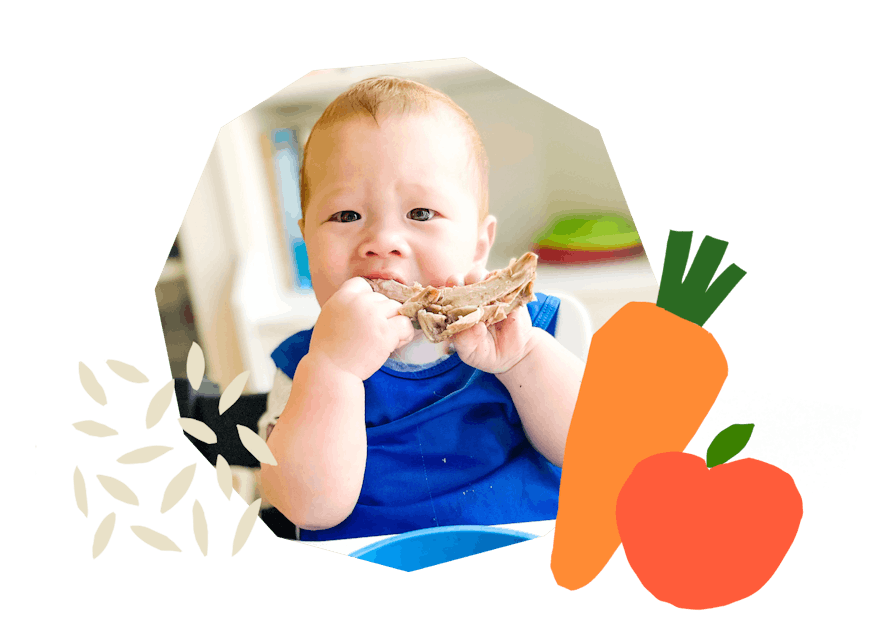
The Program Baby-Led Weaning with Katie Ferraro
A step-by-step digital program for starting solid foods safely and navigating the original 100 FIRST FOODS™ meal plan with baby-led weaning.
 EXPERT-LED, PROVEN APPROACH TO EATING REAL FOOD
EXPERT-LED, PROVEN APPROACH TO EATING REAL FOOD CONCISE VIDEO TRAININGS TO MASTER BABY-LED WEANING
CONCISE VIDEO TRAININGS TO MASTER BABY-LED WEANING 100 FIRST FOODS DAILY MEAL PLAN WITH FOOD PREP VIDEOS
100 FIRST FOODS DAILY MEAL PLAN WITH FOOD PREP VIDEOS
Baby-Led Weaning for Beginners Free Workshop
Is your baby ready to start solid foods, but you’re not sure where to start? Get ready to give your baby a solid foundation to a lifetime of loving real food…even if you’re feeling overwhelmed or confused about this next stage of infant feeding.
Get baby-led weaning recipes and tips delivered to your email inbox.

